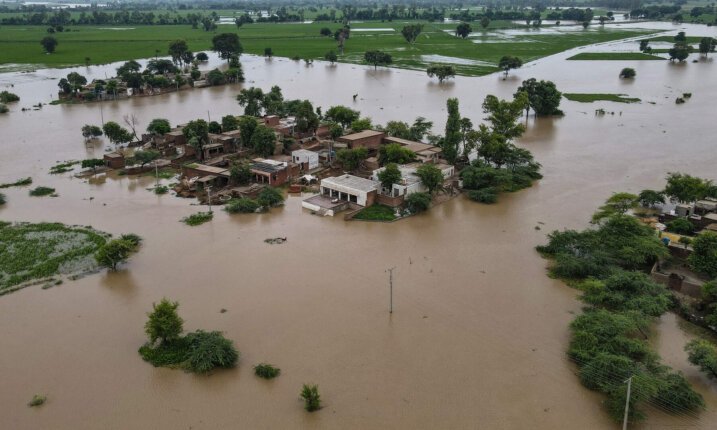Punjab is once again staring at a devastating flood threat, this time even more severe, after India suddenly released massive discharges from the Salal Dam on the Chenab without formally notifying Pakistan.
According to the Punjab Provincial Disaster Management Authority (PDMA), nearly 800,000 cusecs of water are expected to surge into the River Chenab within 48 hours, potentially creating “extremely high flood conditions” across multiple districts.
PDMA Director General Irfan Ali Kathia confirmed that all Chenab-side districts have been put on emergency alert. Commissioners and deputy commissioners have been ordered to stay in the field. “The next 36 hours are critical,” Kathia warned, adding that the water level at Head Marala could rise to dangerous peaks.
Reports also confirm that India has opened the Bhakra Dam gates on the Sutlej, where Pakistan is already battling severe flooding.
Dams at critical capacity
Meanwhile, Pakistan’s reservoirs are running out of absorption capacity. Tarbela is filled to 100%, while Mangla stands at 82%, leaving little room for additional inflows.
The worsening situation has already forced emergency actions. In Bahawalpur, breaches in protective embankments have inundated thousands of acres of crops, forcing villagers to flee with their livestock on boats. In Muzaffargarh, authorities are considering controlled breaches to ease water pressure, while in Multan’s Shujaabad tehsil, officials warned that up to 140 villages are at serious risk if 800,000 cusecs pass through the Chenab.
Human and agricultural losses mount
Punjab Relief Commissioner Nabeel Javed said more than 2,000 villages have been flooded, impacting 2.06 million people. Over 760,000 people have already been shifted to safer areas, with 511 relief camps, 354 medical camps, and 333 veterinary centres set up. Around 516,000 livestock have been moved to higher ground.
The disaster has so far claimed 33 lives, leaving dozens injured. The Punjab government has promised compensation for affected families and farmers once damage assessments are completed.
Monsoon rains worsen crisis
Adding to the misery, heavy monsoon downpours continue. The Meteorological Department reported in the last 24 hours: Lahore 158mm, Hafizabad 121mm, Multan 112mm, Okara 79mm, Sheikhupura 66mm, and Faisalabad 55mm. PDMA has issued flood alerts for the Ravi, Sutlej, Chenab and connected tributaries until September 5.
Many schools in Lahore, Arifwala and Pakpattan have been closed and turned into relief shelters. Currently, 18 government schools in Lahore are housing over 4,000 displaced people, with another 65 on standby if evacuations rise.
In Chiniot, 144 villages are underwater with homes submerged up to 10 feet deep. Jhang has reported 180 villages drowned, while in Dera Ghazi Khan washed-out roads have left communities dependent on boats for food and aid.
Rising health risks
Flooded areas are now seeing sharp increases in dengue, malaria, cholera, diarrhea and skin infections, while shortages of clean water are worsening the spread of disease. Emergency health camps have been established in Shahdara and other affected towns, but doctors warn sanitation remains a huge concern.
Experts call for systemic reforms
Environmental experts argue that repeated disasters highlight structural weaknesses—from unchecked housing on riverbanks to inadequate flood protection and underinvestment in reservoirs and warning systems.
Aid workers warn that while food, medicine and clean water are urgent priorities for displaced families, Pakistan cannot afford to delay long-term solutions any further.



